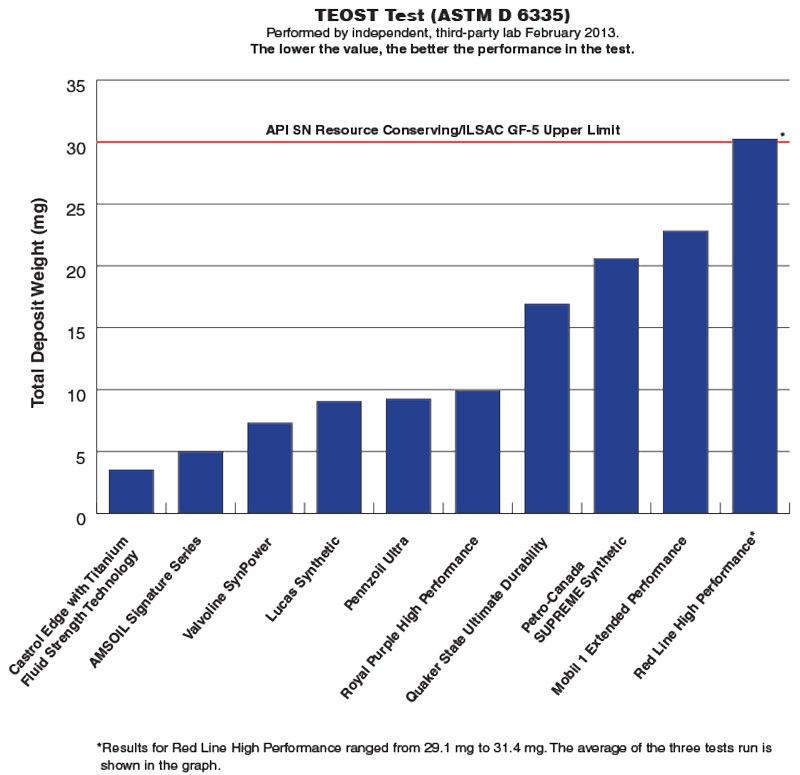|
Turbochargers Create Conditions Best Suited for Synthetic Motor Oil

The industry trend toward smaller
engines that deliver increased power and fuel efficiency
has been well documented. The AMSOIL Newsstand contains
several articles about the key technologies that enable
today’s advanced engines – turbochargers, gasoline
direct injection (GDI) and variable valve timing (VVT).
These articles have mainly addressed how these
technologies affect motor oil.
In short, they’re brutal on oil. It’s one of
the reasons more automakers are installing synthetics at the
factory.
Fuel dilution can be a problem
To summarize, GDI technology locates the fuel
injectors directly in the cylinder (hence the name), as opposed to
the manifold. This arrangement allows for greater control over
injection, allowing engineers to fine-tune engines for greater
efficiency and power. A side-effect of this process, however, is
fuel contaminating the oil. As fuel is sprayed into the combustion
chamber, it can wash past the rings and down the cylinder walls,
into the oil sump. Ford* has seen the issue frequently enough to
release a technical service bulletin (14-0040) titled “Fuel Odor
From Engine Oil and/or Engine Oil Level Overfull” to address F-150
trucks equipped with the 3.5L Ecoboost* engine. Fuel dilution varies
by engine type and driving conditions, with some vehicles showing no
issues.
There are two main side-effects of fuel in the
oil. First, fuel thins the oil, sometimes reducing the viscosity
below the specified grade. If not accounted for in the design of the
engine, this can affect wear rates and have an effect on systems
that use the oil to function, like VVT.
Second, significant fuel contamination
increases the rate of oil degradation. For these reasons, oil
analysis labs typically condemn oil samples when the fuel content is
greater than 5 percent.
Low-quality oils no match for turbos
Many GDI engines are turbocharged (TGDI).
Turbos push more air into the combustion chamber, and tuning for
efficiency can improve fuel economy, especially when combined with
other technologies, such as direct injection. Operating at up to
150,000 rpm on exhaust gases that can exceed 1,000°F, turbos create
extreme conditions that can cause low-quality oils to quickly break
down, creating deposits and shortening the life of the oil. By 2020,
industry experts predict nearly every new vehicle sold will come
equipped with GDI technology, and the vast majority will be
turbocharged.
Many motorists – and even more in the future –
probably see only the tremendous benefits of improved power and fuel
economy from their TGDI vehicles. Most don’t realize the toll modern
engines take on motor oil.
Like most vehicle manufacturers, AMSOIL has
long recommended different service intervals based on “normal” or
“severe” driving conditions. Turbocharged vehicles are automatically
included in the severe service category due to the extreme heat they
generate. To ensure customers have the information they need to
properly maintain their vehicles, a notice will soon be added to the
AMSOIL Product Guides at www.amsoil.com that reminds owners of
turbocharged vehicles to follow the severe-service recommendation.
That means customers using Signature Series Synthetic Motor Oil in
TGDI engines can extend drain intervals up to 15,000 miles/700
hours/12 months, whichever comes first, and should only extend oil
changes beyond that with the guidance of oil analysis.
AMSOIL synthetic motor oil delivers
superior protection
As proven in numerous tests, AMSOIL synthetic
motor oils deliver outstanding protection for these challenging
engines. For example, the TEOST Test (see graph) determines an oil’s
tendency to form deposits at high temperatures and is a good
indicator of turbocharger protection. In the test, Signature Series
5W-30 Synthetic Motor Oil minimized deposits and easily surpassed
API SN requirements. In the extreme heat of the Sequence IIIG Test,
Signature Series scored 86 percent better for piston deposits than
required by API SN, even after doubling the length of the test.
As modern engines become more advanced and
tougher on oil, AMSOIL is committed to formulating synthetic
lubricants that help you get the most out of your vehicle.

Note: These test results
describe and represent properties of oils that were acquired
November-December 2012. Results do not apply to any subsequent
reformulations of such oils or to new oils introduced after
completion of testing. All oils were available to consumers at the
time of purchase. Testing was completed February 2013 by an
independent, third-party lab. Formulations were coded to eliminate
bias, and samples were tested in random order. An appropriate number
of trials of each oil were run to produce results at the 95 percent
confidence level when compared to AMSOIL Signature Series Synthetic
Motor Oil.
|

